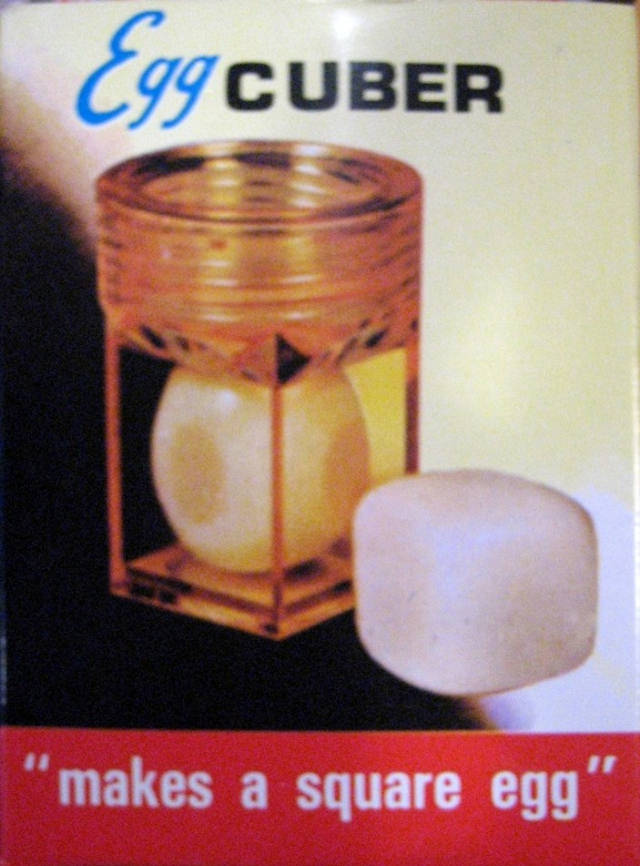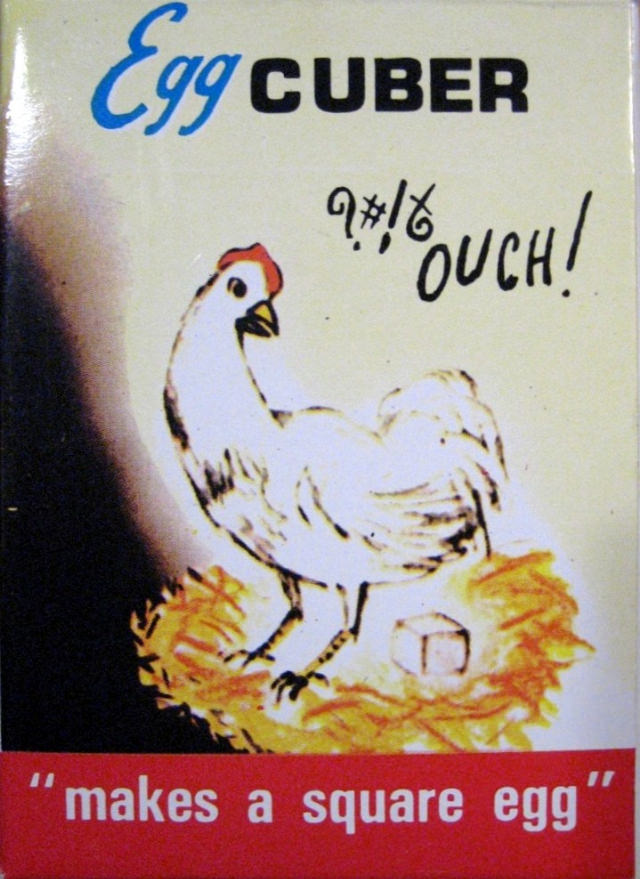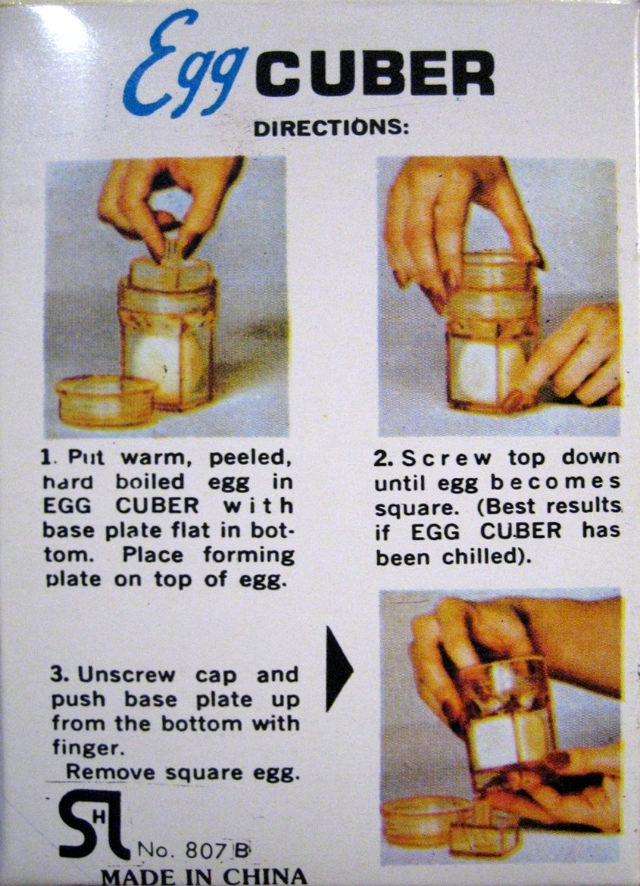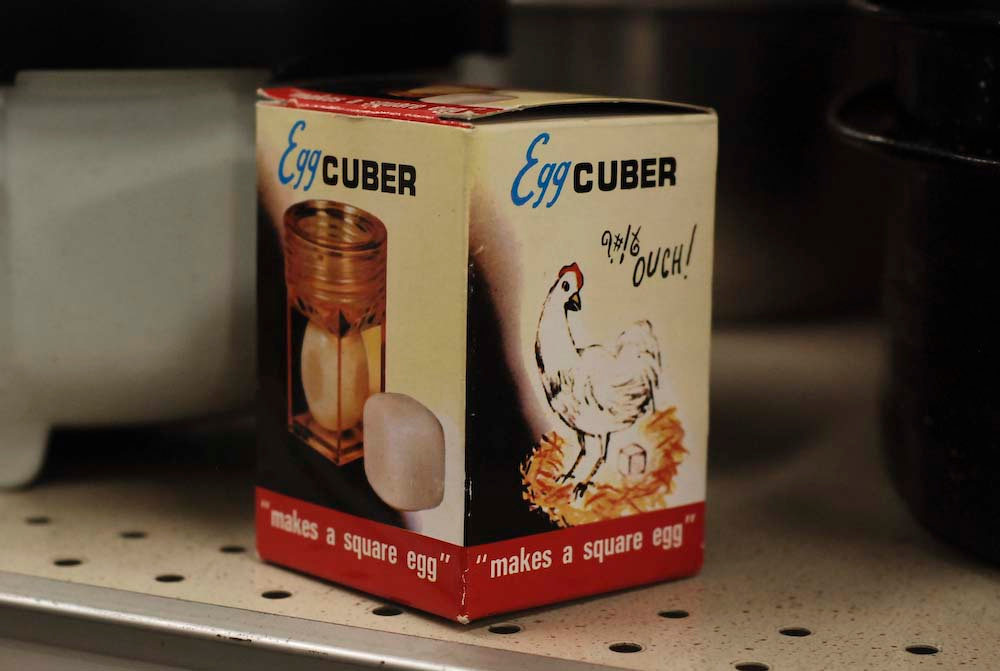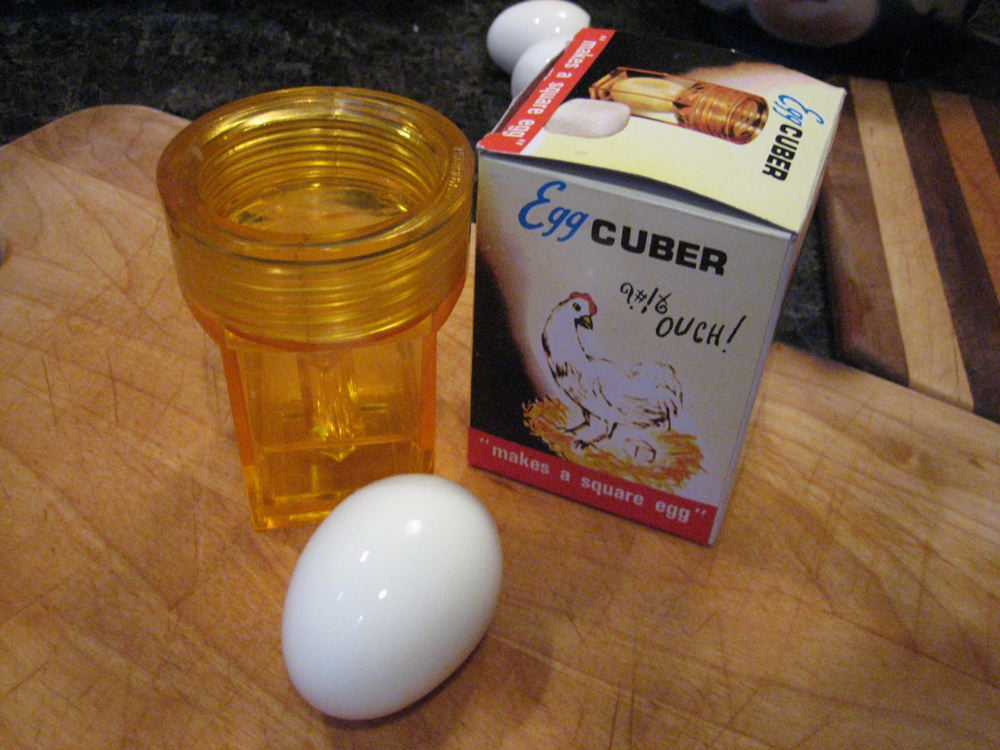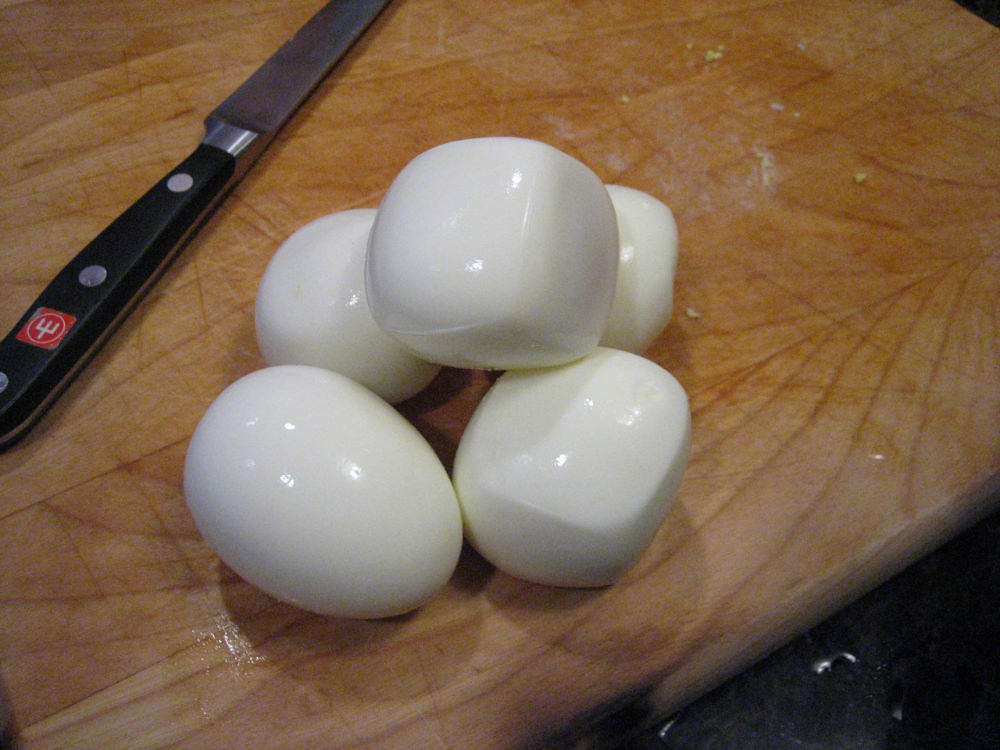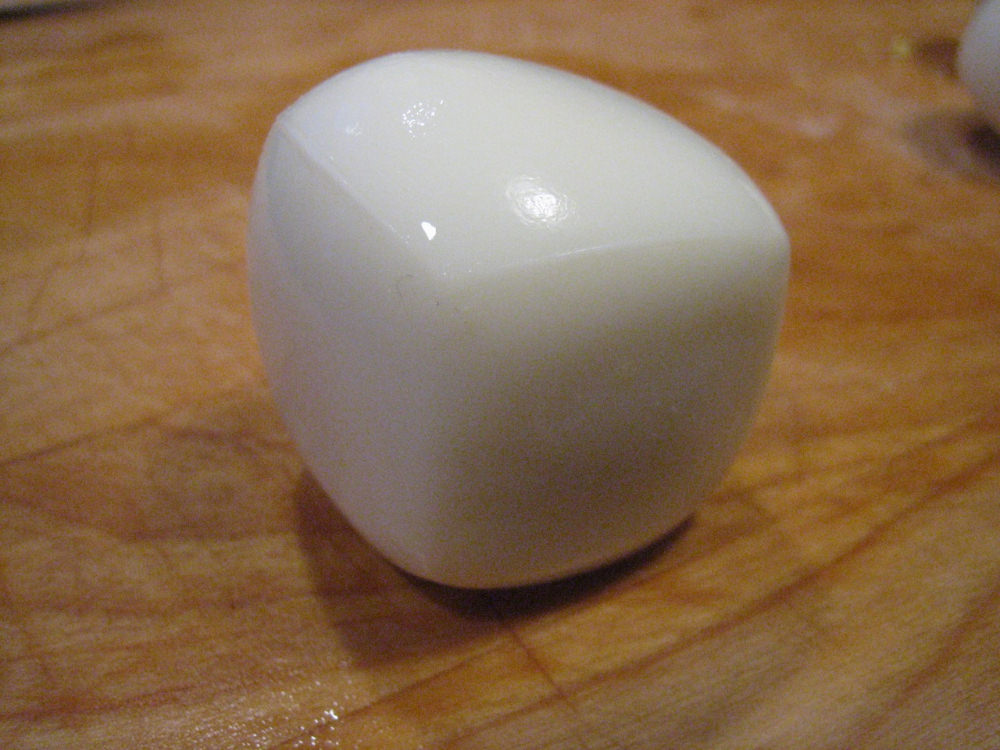Yes, you read that right, square eggs. This odd quest led to the creation of one of the most bizarre yet strangely fascinating inventions of the ’70s – the Egg Cuber. It’s an invention that makes you scratch your head and wonder, “Why?” But at the same time, it’s hard to resist the urge to smile and admire the quirky creativity behind it.
The Egg Cuber was designed with one goal in mind – to transform your ordinary, run-of-the-mill, hard-boiled egg into a geometric wonder. It was a simple plastic device, not much larger than the egg itself. All you had to do was peel a freshly boiled egg, place it in the cuber, screw down the top, and voila! You had yourself a perfectly square egg.
Now, you might be thinking, “That’s all well and good, but why on earth would I want a square egg?” Well, that’s a good question. The truth is, there’s no practical reason to cube your eggs. They won’t taste any different, and they won’t be any easier to cook. But they will certainly be more likely to stay on your plate and not roll off onto the floor, which could be a plus if you’re prone to clumsy moments at the breakfast table.
But perhaps the real charm of the Egg Cuber lies not in its function, but in its sheer absurdity. It’s a reminder of a time when inventors weren’t afraid to think outside the box, or in this case, inside the cube. It’s a testament to the human spirit of innovation, even if that innovation doesn’t always solve a major problem.
The packaging of the Egg Cuber adds another layer of whimsy to this oddball invention. The image of a chicken, eyes bulging out in surprise, exclaiming a cartoonish “Ouch!” suggests that the inventors were very much in on the joke. They knew that their product was more of a novelty than a necessity, and they weren’t afraid to have a little fun with it.


